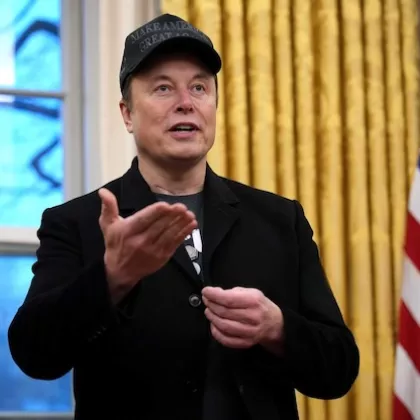Should antitrust laws apply to employers?

Should antitrust laws apply to employers?
October 19, 2022 | By Elena Prager
Antitrust laws have been used for more than a century to protect the public from powerful sellers. A seller without much competition can use its market power to raise prices, hurting consumers who have few other options.
But powerful sellers are not unique in their ability to inflict harm on markets. Powerful employers—say, the sole remaining coal mine in a town in West Virginia—can dictate wages or salaries far below what they would have to pay in a competitive market. Economists have been aware of this power dynamic for more than two centuries. In Adam Smith’s seminal book The Wealth of Nations, published in 1776, he writes: “Masters are always and everywhere in a sort of tacit and uniform combination, not to raise the wages of labor.”
What has changed since Smith’s time is that we have a legal and regulatory system that can intervene when market power becomes excessive. Today, this system is at a crossroads. For the first time, antitrust regulators in the U.S. seem poised to bring the full weight of antitrust law down on employers rather than just sellers.
In this blog post, I share five insights that help unpack the relationship between antitrust law and labor markets. These insights distill the complex issues I work on in my academic research on various flavors of market power, and in my practical experience gained from working in the Department of Justice Antitrust Division.
1) Historically, antitrust regulators have focused on protecting consumers.
Signed into law in 1890, the Sherman Antitrust Act is intended to preserve market competition by outlawing cartels, price-fixing, and related anticompetitive conduct. In principle, the text of the Sherman Act could apply equally to anticompetitive conduct by sellers, employers of labor, or buyers of other goods and services. In practice, antitrust law has been used almost exclusively to protect consumers from firms with market power and their ability to raise prices, stifle innovation, and curtail access to products. A key pillar of antitrust enforcement is blocking mergers that, if allowed to go through, would create too much market power. The federal agencies tasked with enforcing antitrust laws—the Department of Justice (DOJ) and Federal Trade Commission (FTC)—go to court to attempt to block about thirty mergers each year. Before 2021, none of these attempts was driven primarily by a concern about how the merger would affect workers. The vast majority of the court arguments turned on how the merger would affect consumers.
2) In academia and government, the tide is turning.
Growing market power has the worst effects in markets that are already rife with it. It makes sense, then, to approach antitrust enforcement in markets where competition is strong with a light touch. For decades, antitrust experts have viewed labor markets as fairly competitive, with most workers having access to many potential competing employers. But for 30 years, experts in a different subfield of economics have accumulated evidence that labor markets are far from being perfectly competitive. Academic research can be stubbornly siloed. It is only in the last few years that economists who are experts on labor markets and economists who are experts on antitrust issues have started exchanging ideas in a more active way. These conversations have sparked new research at the intersection of the two subfields, which has caught the attention of the Biden administration. In July 2021, the Biden administration released an executive order tasking the DOJ and FTC to evaluate whether antitrust laws can be used to make labor markets more competitive. In early 2022, the DOJ and FTC signaled that for the first time, they would consider adding employer market power considerations to their decision-making process for approving corporate mergers.
3) The rising interest in antitrust enforcement in labor markets is evident in an ongoing court battle.
In November 2021, the DOJ filed its first court case seeking to block a merger primarily on the grounds of its effect on workers. The proposed merger would unite the book publishing companies Penguin Random House and Simon & Schuster. If approved, the merger would shrink the already exclusive club of “Big Five” publishers to four. The DOJ is arguing that the merger would weaken publishers’ incentives to compete for authors, likely resulting in lower payments to authors. As of this writing, the case is still in court and its outcome remains uncertain. What is certain is that the DOJ’s decision to proceed with this court case breaks with the agency’s historical focus on consumers.
4) Researchers are tackling tough, complex questions about labor markets and competition.
In recent years, economists have uncovered enough empirical evidence to demonstrate that many workers do not have access to competitive labor markets, and that weak employer competition tends to be found in the same markets as low worker pay. The follow-up question that is now under the microscope is whether or not weak employer competition actually causes lower pay. Perhaps, instead, weak competition tends to be found in small towns with a small number of local employers, but also with low costs of living that increase the purchasing power of nominally low wages. I recently co-authored a research paper that examines the cause-and-effect question by analyzing how labor markets for hospital workers are affected by hospital mergers. What we uncovered was some of the first evidence that reductions in employer competition, as in the case of a merger, can cause wages to stagnate, especially for employees who have low bargaining power or few alternatives to their current employer. Similar studies have drawn similar conclusions from analyzing pharmacies, banks, and other industries.
5) For antitrust agencies, the path forward is still murky.
It makes intuitive sense that an environment with fewer employers competing for workers allows employers to pay less. But theory is not the same as practice, and policy should not be based on intuition alone. Recent research showing that this intuition is actually true in practice is therefore crucial to crafting good policy. If we want antitrust enforcement to solve a problem in the labor market, that attempted solution will only work if the lever we are pulling is causally connected to what we are trying to fix. We now know, with reasonable certainty, that the merger enforcement lever can causally impact worker pay. But there remain many unanswered questions about how to weigh effects on workers against other important considerations, and about enforcement in areas besides mergers. Wage-fixing is patently illegal under the Sherman Act, for example, but non-compete and no-poach agreements are in murkier legal territory.
The bottom line.
Because the U.S. operates on a common-law legal system, changes to the interpretation of existing antitrust laws must usually arise from new court precedents. It will be years before we know whether the government’s current attempts at applying antitrust laws to labor markets will durably change the antitrust landscape. While we wait for cases to percolate through the court system, researchers in my field will continue churning out evidence to help improve policy. Stay tuned for more to come.

Elena Prager is an assistant professor at Simon Business School. Her research examines strategic interactions between firms, consumers, and workers in health care markets and labor markets.
Follow the Dean’s Corner blog for more expert commentary on timely topics in business, economics, policy, and management education. To view other blogs in this series, visit the Dean's Corner Main Page.











